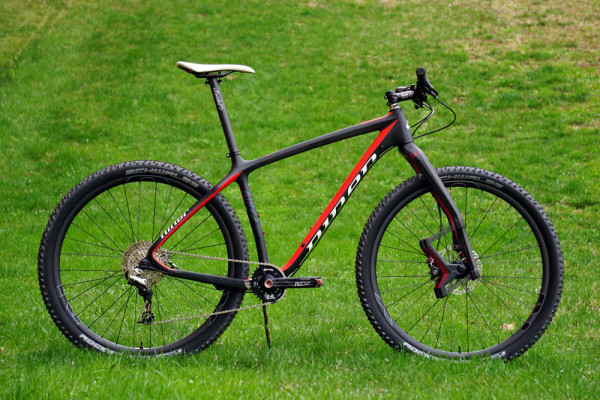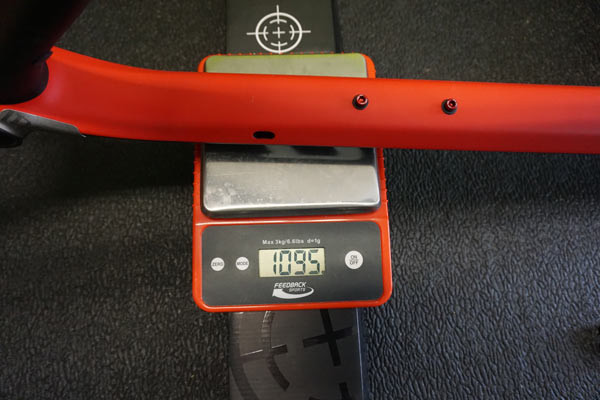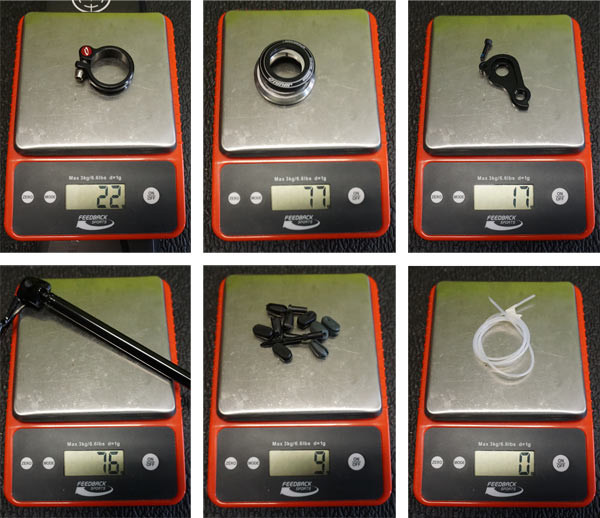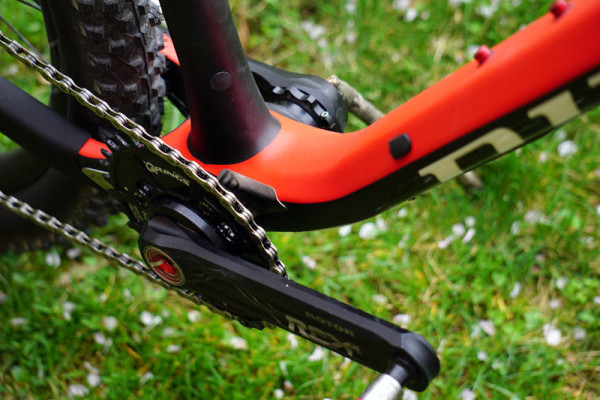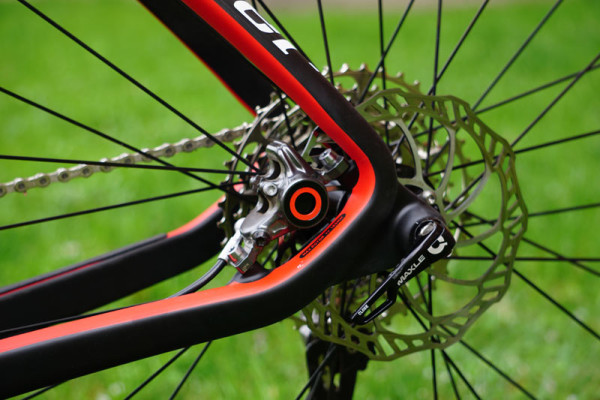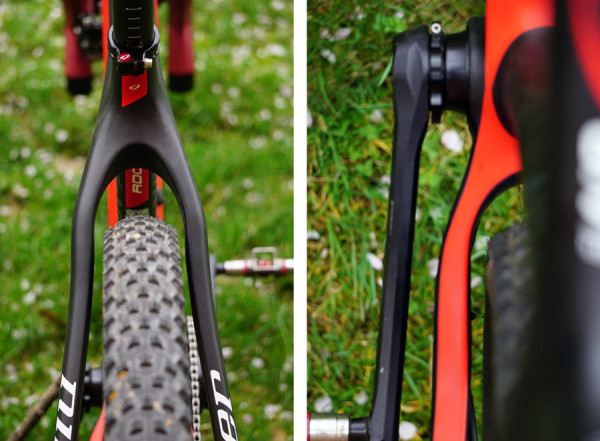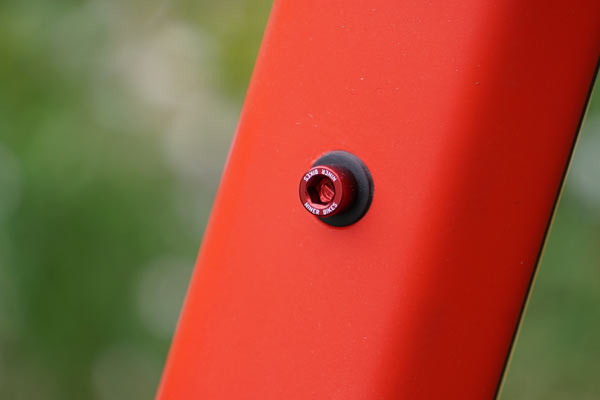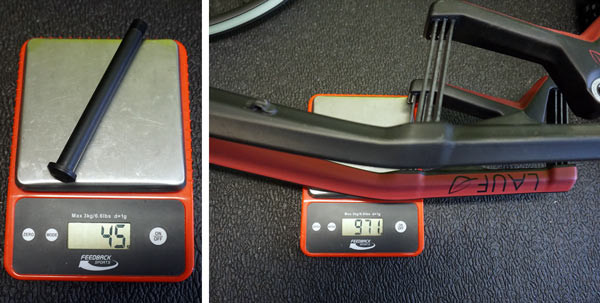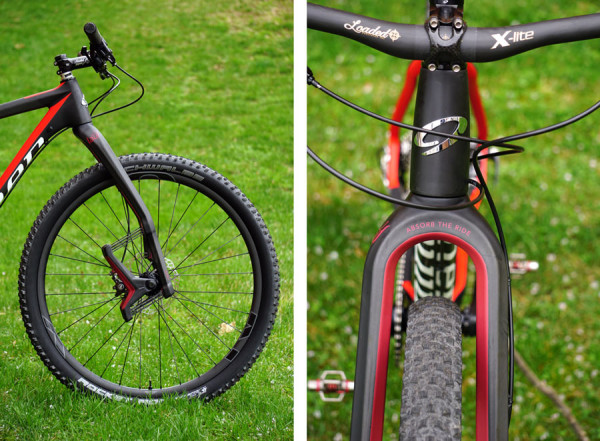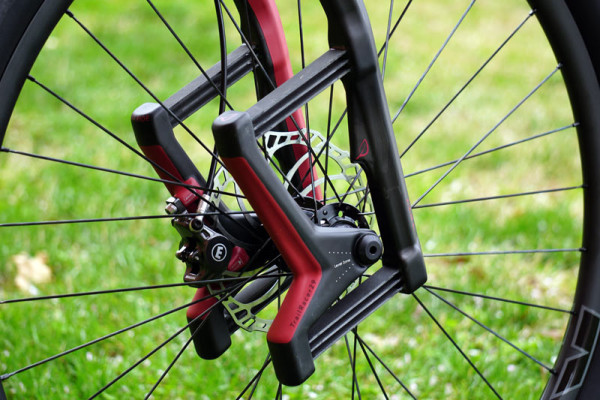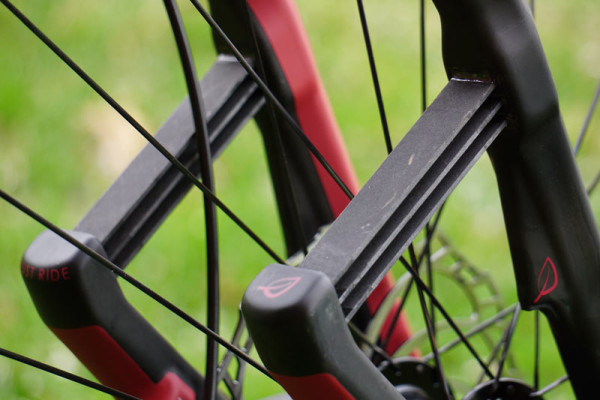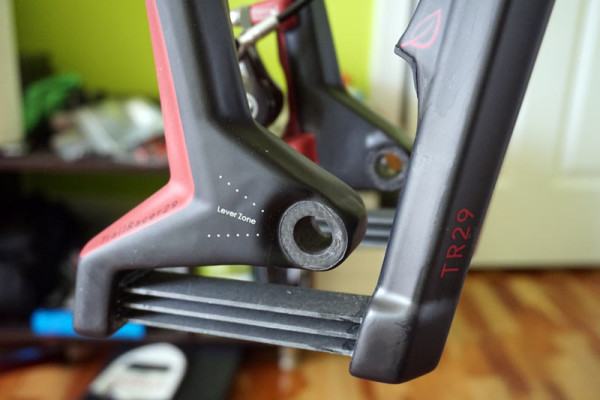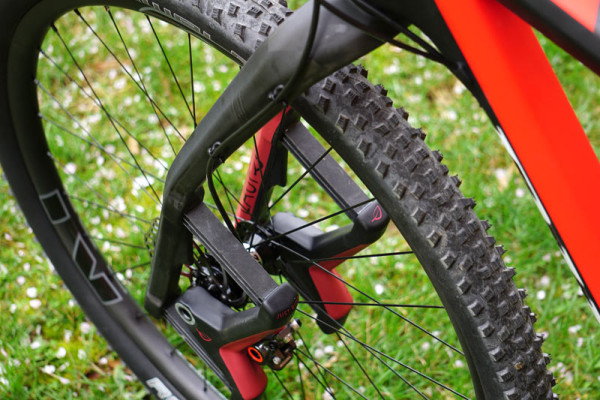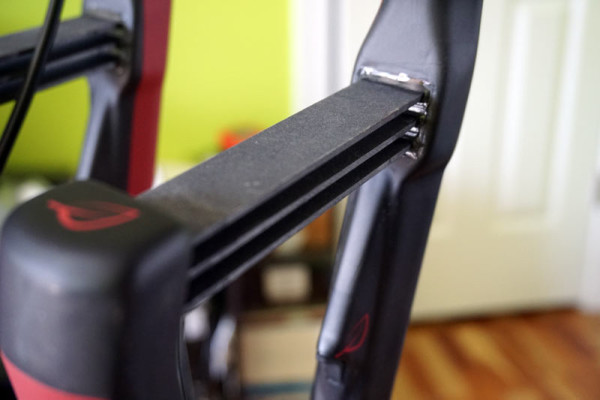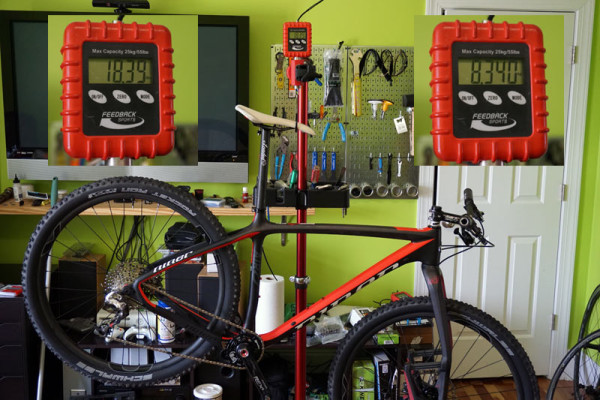At the beginning of the year, I started strategizing for the 6 Hours of Warrior Creek, one of the southeast’s preeminent endurance mountain bike races that sells out in minutes every year. In years past, I’ve raced my full suspension JET9 or some other bike that was on review. This year, I wanted something fast that afforded the opportunity to test all manner of lightweight, race worthy components. As it turns, out, it also let me place a couple older items in a modern setting, which could be of great interest for anyone looking to convert to a 1×10 drivetrain without breaking the bank.
Starting with the backbone of the project, Niner provided the latest AIR9 RDO frame, and Lauf offered a color-matched Trail Racer 29″ suspension fork. Both are stiff, efficient and light weight, getting things off to a great start…
I requested the Niner because their geometry works for me. The fit of the AIR9 is similar to the JET9, which is my go-to bike for most rides. At 6’2″ high, I’m on the tall end of fitting the size Large (tested), but Niner’s XL bikes are simply huge. I’ve demo’d both and am far more comfortable on the large.
The frame weighed in at 1095g with water bottle cage bolts and the cable liner that’s preinstalled to ease setup (but adds no weight). Claimed weight for a Medium is 1,060g, so this seems about right.
Left to right, top row then bottom row: Seatpost binder (22g), headset (77g), derailleur hanger (17g), Maxle (76g), Frame plugs (for standard cable housing, plugs and Di2 – 9g, but you won’t use all of them), and the cable liner (0g).
So ridable weight would be about 1,296g. All of the parts shown are included with the frame, which retails for $1,999.
The frame is all carbon, tip to tail. The headset cups rest in shaped carbon trays top and bottom.
The BSB ‘cross bike and AIR9 RDO were two of the first to use Niner’s new Carbon Compaction Process, which uses a rigid EPS foam mandrel inside the tubes to wrap the carbon on during the layup process. This results in better compaction and a smooth interior. The benefit is a stronger frame that’s lighter and less prone to stress risers or weak spots.
The AIR9’s boxy, oversized downtube and wide bottom bracket section makes for a very stiff platform. The bike is ready for standard mechanical drivetrains, Side Swing or Di2. Titanium guards protect the frame just in front of and behind the BB spindle.
The shaping continues on the chainstays, flowing through the bent dropout section into the seatstays. The frame is designed with efficiency in mind, and some of the early AIR9 bikes I rode were (IMO) overly stiff and could be quite rough.
The rear brake hose runs externally along the bottom of the downtube, under the BB, then along the inside of the chainstay. The low profile brake mount is set up for a 160mm rotor minimum.
Tire clearance is claimed at 29×2.4 max, leaving plenty of room for these Schwalbe Rocket Ron 2.25s.
Niner’s little details have continually progressed. Frames come with anodized water bottle bolts that color match the pivot bolts and covers on their full suspension bikes, too. It’s a little thing, but one that really ties things together.
The Lauf Trail Racer 29er fork comes in at 971g (2.14lb) with uncut steerer. The thru axle bolt adds 45g.
Built around a rigid full carbon fiber fork with glass fiber leaf springs, the Lauf adds just enough suspension to take the edge off without adding a bunch of weight. Compared to a Rockshox RS-1, the Lauf saves 674g (1.59lb) accounting for the axle. Unsprung parts have a claimed weight of just 260g, which is far less than most any other suspension fork. That and its lack of damping allows the Lauf to be very responsive. Two versions are available, regular (riders over 143lb) and light (riders under 154lb). Retail is $990 plus $20 shipping anywhere in the world with a five year warranty.
The idea is simple: “Absorb the ride”. And that’s precisely what it does, using sets of three carbon blades on the top and bottom of each side, letting the axle float undamped. Total travel is just 60mm, but normal riding seems to use only about half that. It’s progressive, getting stiffer as it runs through its travel, and the second half is reserved for massive hits or hucking off a three foot drop. I don’t think I’ve even come close to bottoming it out yet.
The legs are extremely stiff, and they need to be. Because the unsprung “wings” on each side are free to move independently, but only up and down. The fork’s stiffness prevents any noticeable lateral or twisting flex. The axle is a standard 15mm thru axle and is tightened with an allen wrench from the non-drive side. It’s tasked with keeping the wings moving in parallel and seems to do a fine job. Even Lauf’s folks will admit there’ll be a little bit of uneven compression in hard cornering, but never enough to let the tire rub the legs or seriously affect handling.
Tabs on the backside acts as a bump stop, with a small rubbery patch to prevent carbon-on-carbon smackdowns should you bottom it out.
Brake setup is straightforward, though I did file the face of one of the mounts slightly to help the caliper line up without shifting as the bolts were tightened. This isn’t the first fork I’ve had to do that to and shouldn’t be taken as a lack of quality, but do it to your fork at your own risk.
Other than the axle threads and bumper pads, it’s all composite.
After folks get over the looks, the first question is always “How does it work?” inevitably followed by “Isn’t it bouncy?”
Sure, it’s a little bouncy. There’s no damping. But because the travel is so minimal and your weight is pressing down on it, it never feels bouncy riding. It just soaks up the bumps and returns, keeping the wheel planted on the ground and relieving your wrists, elbows and sanity from getting jostled over every little thing.
The Warrior Creek trail in Wilkesboro, NC, has a bit of everything to test it: Roots, rock gardens, sustained climbs and wickedly fast and awesome berms that create impressive G forces. It didn’t get the nickname #wilkesbermo for nothing. The bigger, faster berms were interesting because I could feel the fork compressing into them, but it didn’t feel like any energy or speed was lost to suspension. And while I was certainly a bit beat up after six hours, I didn’t miss my regular suspension. And I definitely didn’t miss the weight of my regular suspension. The feathery front end made it so easy to whip the bike up and over things even long into the event. The only thing this fork does to drive the weight up is require a minimum 180mm rotor.
I’ve also ridden it in Pisgah, hitting some high speed technical descents where I’d normally want a 120mm fork or more, and it did just fine. Even on a few hits that were bigger than expected or in rapid succession, the Lauf took the beating in stride and helped keep the bike in control. How? By preventing it from bouncing everywhere.
First impressions are really, really good. For the long term, we’ll be spreading it around to a few of our testers that traditionally ride fully rigid hardtails and paying close attention to durability.
A primary goal with this project bike was to see how light we could build it without using (too many) boutique products or those with questionable durability. I’ll be posting several installments focusing on drivetrain, brakes, wheels/tires and cockpit over the next few days, but will tease with this: 18.39lb (8.34kg) with pedals, ready to ride. A mountain bike this light is otherworldly. To paraphrase Ferris Bueller, “It is so choice. if you have the means, I highly recommend riding one.”
Fortunately, this project build isn’t unobtainably expensive. I could easily go lighter, but there’d start to be performance tradeoffs. As is, the stiff, efficient Niner AIR9 RDO and Lauf Fork provide a rock solid base for building a screaming fast XC race bike that doesn’t sacrifice all manner of comfort for speed.
Stay tuned for the rest of the build…
